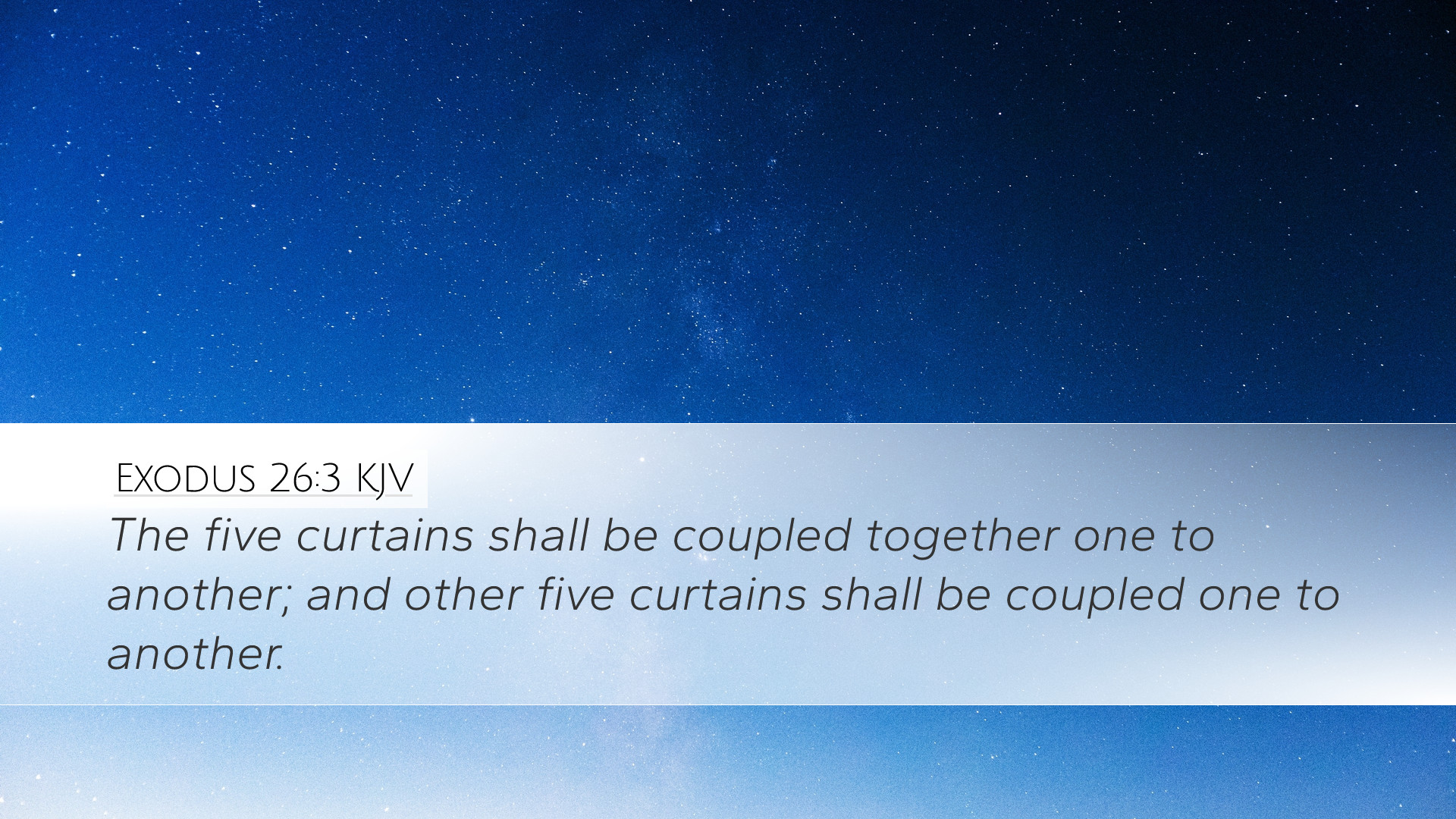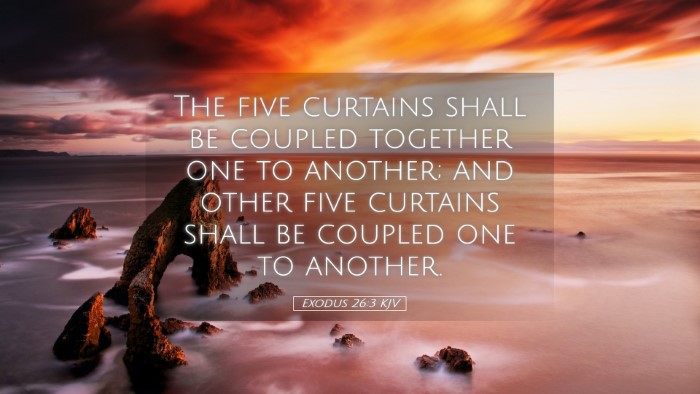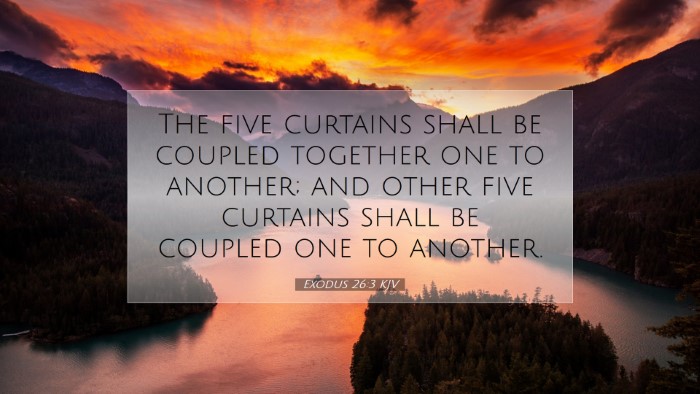Exodus 26:3 - Commentary Summary
Verse: "The curtains shall be joined together, five to another, and five to another." (Exodus 26:3)
Introduction
The passage in Exodus 26:3 addresses the construction of the Tabernacle, a critical element in Israelite worship and God’s dwelling among His people. This verse specifically discusses the joining of curtains, which forms part of the Tabernacle's fabric structure. Public domain commentaries provide valuable insights into the significance, symbolism, and practical implications of this instruction.
Context and Historical Background
The instructions given in Exodus are part of the broader narrative concerning the Israelite’s journey from Egypt to the Promised Land. The Tabernacle served as a mobile sanctuary, symbolizing God's presence among His people as they wandered in the wilderness. This verse fits into the larger context of God's detailed directives to Moses about how to build the Tabernacle, showing His desire for order and holiness in worship.
Commentary Insights
1. The Structure of the Tabernacle
Matthew Henry emphasizes that the Tabernacle's design reflects heavenly realities. The joining of the curtains demonstrates a spiritual principle—the unity of God’s people. Each group of curtains, joined together, signifies the collective nature of worship and the communal aspect of God's dwelling among His people.
2. Symbolism of the Curtains
Albert Barnes interprets the curtains as representations of spiritual truths. The number of curtains (five) can be seen as symbolic of grace and the law, which are foundational to the relationship between God and His people. The joining of these curtains indicates the blending of God’s grace with the requirements of His law, indicating that worship necessitates both an acknowledgment of divine grace and the adherence to His commandments.
3. The Nature of Unity
Adam Clarke points to the importance of unity within the community of faith. The meticulous instruction to join the curtains highlights God's intention for His people to be bound together in worship. This notion extends into the New Testament where believers are called to be one in Christ, fostering a sense of harmony and collective identity within the Body of Christ.
4. Practical Applications for Worship
Today, pastors and theologians can draw parallels from Exodus 26:3 for practical applications in worship settings. Just as the curtains of the Tabernacle were intended to reflect an orderly worship environment, so too should modern worship spaces prioritize structure and meaning. This focus can enhance the worship experience, centering the congregation on the sacredness of gathering together to glorify God.
5. Theological Reflections
From a theological standpoint, Exodus 26:3 invites reflection on God's desire for relationship and community. The act of joining curtains parallels the New Covenant motif where believers are woven together as one body in Christ (1 Corinthians 12:12). The unity exemplified in the physical structure of the Tabernacle becomes a foreshadowing of the unity available through the Holy Spirit in the Church.
Conclusion
Exodus 26:3 is a profound verse that resonates through both historical context and contemporary application. The instruction to join the curtains reflects deeper spiritual truths about community, unity, and the sacred nature of worship. For pastors, students, and biblical scholars, this verse encapsulates essential themes of grace, order, and the presence of God, underscoring the importance of careful attention to worship practices in the life of faith.


